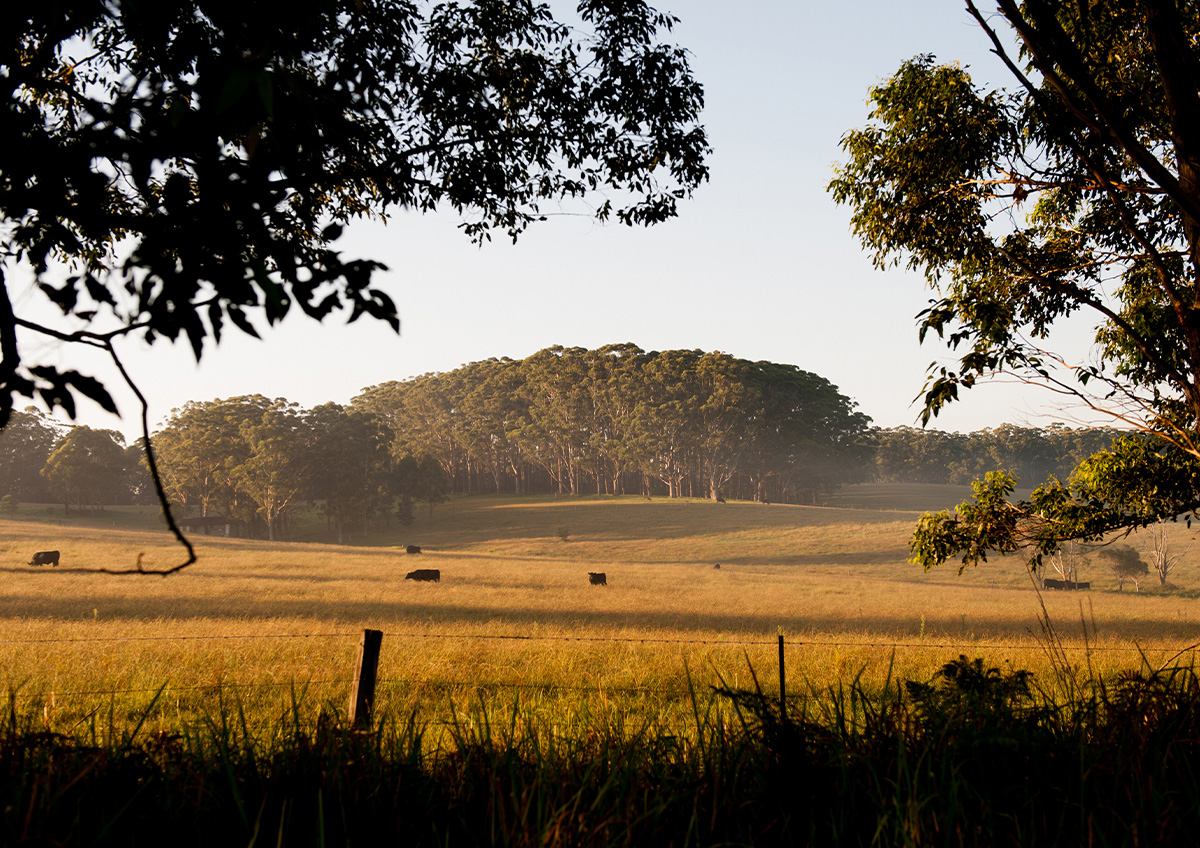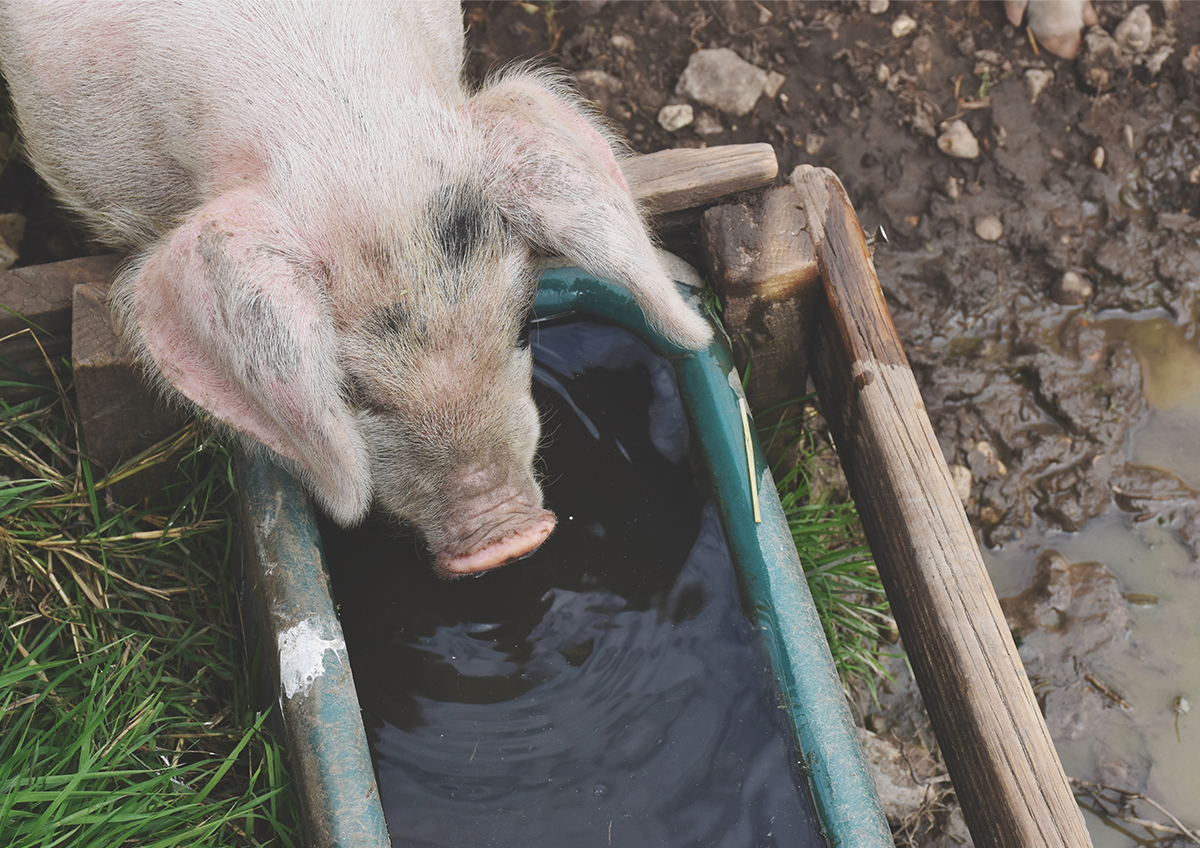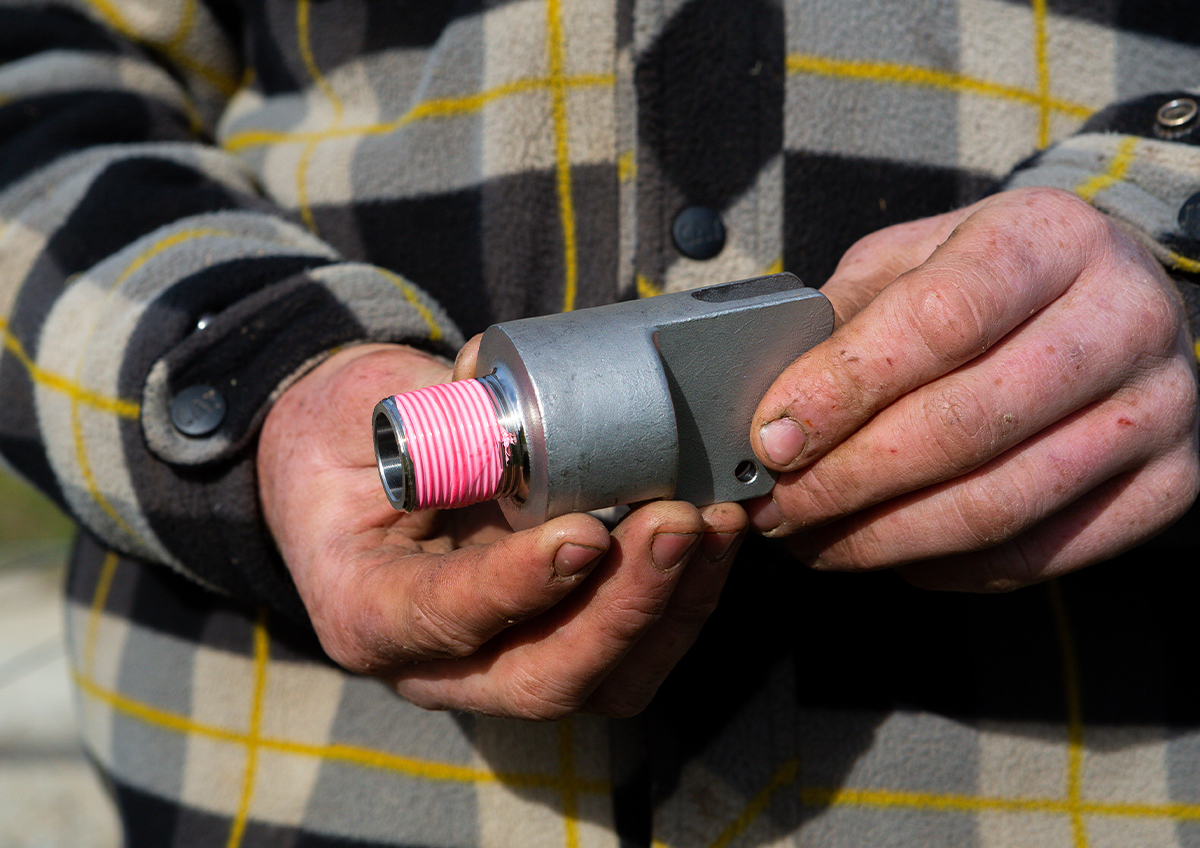How Farmers Can Save Water

Water is the heart of our farms, whether it’s used to irrigate crops, grow produce or raise livestock – farms simply cannot function without a reliable, quality supply of water. In order to manage and conserve water, you first need to understand your current usage, storage and supply. Once that is understood, there are many solutions that can be used – from small changes such as managing leaks, to bigger improvements like installing a new groundwater pond, or exploring irrigation scheduling. Below, we will explore some ways you can better understand your farm’s water usage and dive into some tips on farming water conservation, such as rotational grazing, drip irrigation and rainwater storage.
Why is Water Conservation Important for Australian Farmers?
Water conservation is particularly important on Australian farms right now, with September 2023 recorded as the driest month in history (since 1990!), water scarcity is a real challenge. Droughts are a risk, and can often lead to tough situations when water is limited – forcing decisions that could impact animal welfare, your team and ultimately your farm. In addition to these harsh weather conditions, another El Nino drought event is forecast for this summer in Australia. These weather conditions have recently led to some difficult decisions like cheap stock sell offs, with lamb selling for only $4 a kilo & even some resorting to giving away livestock given freighting the stock to abattoirs was more costly than the value of the stock itself.
A lack of water can impact both livestock and crop farming – livestock themselves may need to feed on crops. For crops, a lack of adequate water can impact the bottom line as yields are reduced as plants won’t grow optimally – and in the worst cases they will die. Water keeps our farms alive and productive, so it is essential to be able to conserve and manage wherever possible.
Fortunately, our industry is adapting to these challenges with innovation and creativity. Widespread techniques such as the capture and storage of rainwater in wells, groundwater or ponds have been in use for a while now. Catching up in popularity, irrigation scheduling and drip irrigation are methods that are constantly being innovated and improved as technology pushes the practices forward, allowing techniques to maximise returns from water supply. Another creative approach to managing water is rotational grazing, which can help make grass pastures more drought resistant by encouraging healthier root systems, allowing livestock to feed more efficiently. There are many other conservation methods our industry can and does employ – some of which we will explore later on.

How Much Water Does My Farm Need?
In order to plan effectively and prepare for a pending drought, you must know how much water your farm needs – once armed with this knowledge, conservation becomes a more manageable task any required water infrastructure upgrades may be more obvious. Specific requirements vary between regions, the crop or stock and the management and day-to-day practices of your farm. The key areas on most of our farms will include some of the following – stock requirements, crop requirements and general farm usage.
Taking stock, for example, a cattle farm may need between 55 to 112 litres per head, per day, while sheep may be anywhere from 4 all the way up to 14 for ewes with lambs. The bigger the animal, the more water you will need – and it’s not just for drinking, it’s also cleaning and in some cases also growing feed. If you are unsure about how much your stock needs, the Victorian Government has a useful calculator which provides water requirement values for stock. We’ve also explored stock-specific water requirements in more detail in one of our previous articles.
For crop and pasture spraying, a significant amount of water is typically required – depending on the crop, volumes of water could be anywhere between 40 to 200 litres per hectare for every application. There are a huge range of crops that can be grown in Australia, and no doubt if you are growing crops, you’ve already done a lot of research into water requirements. With that said, there are some basic tips to help you – it’s recommended to consider the requirements in every season, the length of time between planting and harvesting and finally the crop water requirements at every stage of growth. Harvested crops may also need further water when they are washed.
Finally, your general farm activities and household or domestic use (if you live on your farm) should be considered too – these typically include cleaning the yard or equipment as well as running the household.
In order to answer this question thoroughly, you need to create specific calculations based on the make-up, size and requirements of your farm.
How to Calculate Water Needs for a Farm
While the thought of calculating your water needs may seem like a daunting task if it’s the first time, or if it’s been a while; it’s actually a well documented and fairly standardised process. Ideally, you want to arrive at a number for either your daily or annual water usage in litres or megalitres, respectively. There are many useful online resources you can use to help arrive at an annual water usage number. For example, the Victorian Government Farm Water Calculator can assist in building a solid understanding of your water requirements, returning values of your water needs based on inputs specific to your farm. The calculator has four key areas to help with calculating your water needs:
- Usage
- Livestock drinking requirements per type and category e.g. a working horse or a milking dairy cow. The calculator will output the water requirements for the selected animal and you can multiply by how many you have.
- Household and garden shed requirements.
- Other requirements (including cleaning equipment and livestock or firefighting).
- Usage for irrigation of crops (through different stages of growing and also requirements per season).
- Storage
- Dam volume – if you’re unsure, this can be estimated with a useful formula.
- (Volume (ML) = [LtWt + LbWb + [9Lt+Lb)(Wt+Wb)]] × D / 6000).
- Where:
- Depth of excavation = D
- Bottom length = Lbc
- Bottom width = Wb
- Top width = Wt
- Top length = Lt
- Tank volume
- Dam volume – if you’re unsure, this can be estimated with a useful formula.
- Supply
- Groundwater, creeks and rivers. These can be a major asset, but are not an unlimited supply – the supply will vary in amount and quality as well as over time.
- Roof surfaces: runoff can also be calculated based on the area of roof and rainfall received, with the formula: volume of water (litres) = Annual average rainfall (mm) × Roof area (m²) × 0.95
- Potential catchment
- Property details (including location) to help determine average annual rainfall
Once you’ve got an input for each relevant area, the calculator will return the yearly balance of all water on your farm, with the formula: Farm Water Balance = Water Storage on-farm – Water use on-farm. This Farm Water Balance may return a surplus (positive number) or a deficit (negative number).
With a surplus, the volume of available storage is greater than the amount of water required on your farm for a year and providing that storage is full at the start of the year – the water requirements can be met. A deficit means that water requirement has exceeded the storage available – in that case, you should consider whether you can refill your water source throughout the year so the property does not actually run out of water, or if running out of water does happen consistently; then water conservation methods (which are outlined below) need to be implemented.

How to Save Water on Your Farm
While the number you arrive at is the current state of your farm, there are many techniques you can employ to help improve your water conservation and save water. With the sheer amount of innovation within the industry on water conservation, there’s no shortage of approaches you can take to help save water on your farm. With improvements spanning irrigation systems, dry farming and trough float valves there are many ways you can conserve your water:
- Capturing and storing water: this is a widespread practice, and with good reason. Capturing, storing and reusing rainwater can be a fantastic way to save water on your farm. Many of us rely on wells or groundwater; some may even have ponds to store rainfall too. If water needs are an issue, your farm may have space for another groundwater pond to help increase water storage.
- Rotational grazing: the practice of moving grazing herds at specific intervals before the pasture gets too depleted, can encourage healthier root systems that need less water and are more hardy in drought situations. To undertake this, if you have a large pasture, divide it into sections and rotate your stock through each section. Extra benefits of rotational grazing include greater organic matter in the soil and better forage cover, which also help to conserve water.
- Drip irrigation: this involves delivering water and nutrients directly to the plants root, when they need it – a way to get the maximum return from your water. This can be set up with an automated system to schedule water when required; a well-run system can save up to 80 percent more water than a typical irrigation system. This also has the added benefit of increasing crop yields too.
- Irrigation scheduling: this involves ensuring that soil moisture is consistent for maximum plant growth. This can work well with drip irrigation; as it involves scheduling how often and how much water should be delivered to plants. Schedules can be tied to weather conditions, as well as the moisture content of the soil to ensure maximum return from water.
- Compost and mulch: mulching and compost may not be immediately obvious sources of saving water, but mulching helps to reduce water evaporation in soil by protecting it from the daytime sun – meaning plants need less irrigation. Usage of mulch and compost have other benefits too, like fertilising the soil and increasing crop yield, benefits that should further reduce water required.
- Float valves: float valves maintain a consistent water level in your trough, helping to keep your flock hydrated, without wasting water. This is particularly effective during drought situations to ensure that your stock will always have access to water.
- Cover crops: cover crops are planted to cover the soil, and are not harvested. They help to reduce evaporation and increase soil water retention for the harvested crop. Most often, grasses are used as cover crops but so are legumes. Some examples may include ryegrass, winter rye and oats.
- Conservation tillage: sometimes known as ‘minimum tillage’, this process leaves harvested residue on fields to help improve soil water retention, and is a process of tilling without completely turning the soil over. With this technique, primary tillage is completely avoided and only secondary tillage is employed to a small extent.
- Going organic: this is a broad field that may also incorporate cover crops and mulching – but organic farming practices typically require less water in total. However, because organic farming typically has less yield your total water usage may be down, but your water per crop may actually increase.
- CEA farming: CEA (Controlled Environment Agriculture), also known as ‘indoor farming’ is essentially creating a fully controlled environment to grow your plants. This can be energy intensive, but can have huge water savings of between 75-90% vs a typical field-cultivation.
- Drought tolerant crops: ancient crops that are hardy and drought resistant are becoming viable options; as some farmers move away from wheat, corn and rice. In Australia, saltbush has been used as a drought-resistant ancient crop that can be used as secondary feed for sheep and cattle.
- Dry farming: is essentially farming without irrigation, utilising stored moisture in the soil from the previous rainy season.

Top Tips for Farmers
While some of the above technologies may be highly specific, there are a few top tips that will apply to livestock and agricultural farms:
- Use high quality stainless steel trough valves – high quality, stainless steel valves are less likely to be damaged by livestock, therefore they have a longer lifespan and contribute to less water wastage across a farm via stock breakages.
- Find and fix leaks – being on top of leaks is vital. A leaking pipe joint or dripping faucet can contribute to the loss of up to 45 litres per unit per day. You can identify leaks in your system by turning off the system and then checking to see if the metre still registers as running.
- Pay attention when filling tubs – taking a mental note of how long a tub takes to fill can ensure you don’t overfill and wastewater. A water tub that is accidentally left running while filling up with a hose can lead to a loss of up to 23 litres per minute. A sensible way to manage this risk is to install a float with a shut-off.
- On dairy farms, capture the pre-cooler water and re-use it for yard washing or for other purposes; allowing it to run into the drain can cost up to 90 to 140 litres of water a minute.
- Divert wash water away from a clean-in-place (CIP) system into a storage tank. Reuse this water through a pump to wash down the parlour.
- Monitor your wash system to ensure the air injection system is working correctly and check the settings to see you are only using the amount of water required for each wash cycle.
- Revisit some standard processes such as cow cooling, which doesn’t need water spraying continuously. Cycle the unit off and on in coordination with a fan system to save on water
- Manually clean floors and alleys before washing down.
- Rinse equipment in a bucket rather than continuous running water – another one which might not seem like a lot, but it can pay off and add up over time.
With the amount of tips, technologies and advice floating around on this topic – water management can seem complicated at times. That being said, we hope some of the technologies and tips discussed in this article can help you along your journey of water conservation; in particular we think that capturing and storing water, rotational grazing and irrigation scheduling are fantastic places to start or improve upon existing systems. Space permitting, setting up another groundwater pond can add a huge boost to your water storage capability. Of course, water conservation doesn’t always have to be a big, technical solution – it can be simple, small changes that add up over time – like fixing leaks, paying attention when filling tubs or even rinsing equipment in a bucket instead of with a continuous flow. With that in mind, what are some changes you could make tomorrow that would help your farm to conserve water?